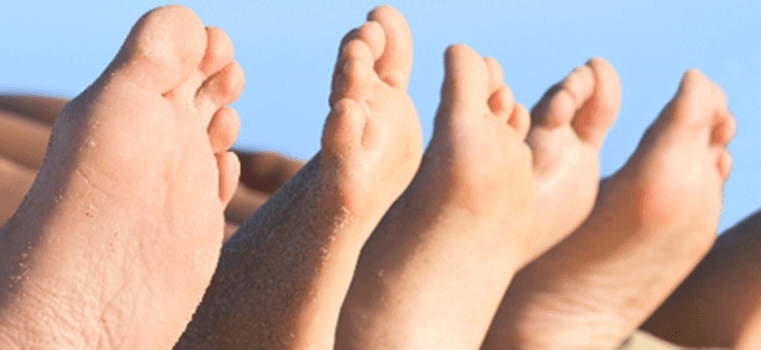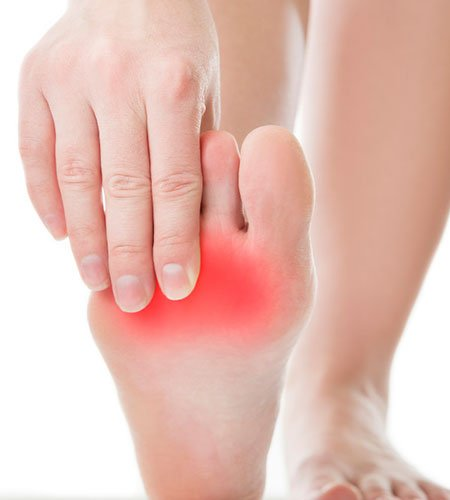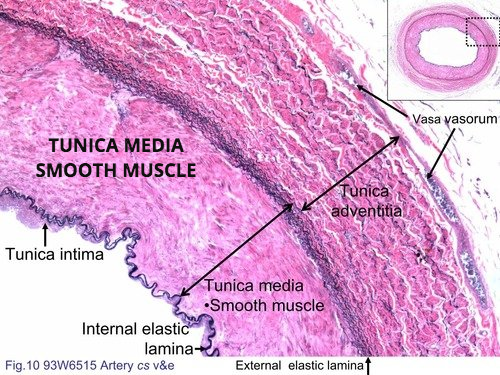Neuropathy Cause & Treatment
Woundcare Table of Contents
Diabetic Peripheral and Autonomic Neuropathy
Breakthrough Nitroglycerin Patch Protocol by Dr. Mark Reed
Diabetic neuropathy affects nearly half of all individuals with diabetes and can lead to devastating complications like foot ulcers, infections, amputations, and loss of independence. At the OC Center for Wound Healing & Foot Care, Dr. Mark Reed has revolutionized diabetic neuropathy treatment through a proven protocol using nitroglycerin patches—a therapy he’s developed and refined since 1989.
Over the past 30+ years, Dr. Reed has successfully reversed peripheral and autonomic neuropathy in over 3,000 patients while dramatically reducing ulcer occurrence and recurrence. His pioneering use of nitroglycerin patches improves blood flow, accelerates nerve regeneration, and restores function.
What Is Diabetic Neuropathy?
Diabetic neuropathy is nerve damage caused by prolonged high blood sugar levels, leading to oxygen deprivation in nerves and small blood vessels. It affects both type 1 and type 2 diabetics, with symptoms ranging from mild discomfort to severe pain, loss of sensation, and disability.
Types of Diabetic Neuropathy:
1. Peripheral Sensorimotor Neuropathy
• Symptoms: Tingling, burning pain, numbness, muscle weakness, foot cramping, nighttime balance loss, and unstable antalgic gait.
• Pattern: Commonly affects the feet and hands in a “glove and stocking” distribution.
2. Autonomic Neuropathy
• Impacts internal organ function.
• Cardiovascular: Orthostatic hypotension, silent heart attacks, arrhythmia, dizziness, balance issues.
• Gastrointestinal: Nausea, vomiting, diarrhea, constipation, bowel incontinence.
• Sudomotor: Dry skin, excessive sweating, limb hair loss, itching.
• Endocrine: Hypoglycemic unawareness.
• Cerebral: Sexual dysfunction, depression, anxiety, sleep issues, vision problems, speech changes, memory loss.
Many patients present with distal symmetric polyneuropathy, where symptoms start in the toes and spread upward.
Causes of Diabetic Neuropathy
Diabetic neuropathy stems from oxygen deprivation caused by chronically elevated blood glucose levels. It restricts blood flow, damages small vessels, and impairs nerve health.
Core Mechanisms:
• Arterial Swelling: Limits oxygen delivery to nerve tissues.
• Leukocyte Dysfunction: White blood cells, fibroblasts, and osteoblasts lose mobility, leading to poor healing and infection risk.
• Loss of Protective Pain Sensation: Increases ulcer and injury risk.
Prevalence
Up to 60–70% of diabetics experience neuropathy. Tight glucose control can lead to remission (A1C <6), but mismanaged diets—even with insulin—can still result in ulcers, dialysis, or amputation.
Other Causes of Peripheral Neuropathy (Non-Diabetic)
• Idiopathic Neuropathy (unknown cause)
• Diseases: Alcoholism, kidney failure, B12/folate deficiency, fibromyalgia, lupus, HIV, syphilis
• Medications: Chemotherapy (Vincristine), antibiotics (Flagyl, INH)
• Toxins: Lead, mercury, arsenic, pesticides
• Inherited Disorders: Charcot-Marie-Tooth disease
• Nerve Entrapments: Carpal tunnel syndrome, tarsal tunnel syndrome
• Rare Causes: Neurofibromatosis, Fabry disease, statin-induced neuropathy
Symptoms of Peripheral & Autonomic Neuropathy
• Peripheral: Burning, tingling, numbness, weakness, pain—especially in hands and feet.
• Autonomic: Dizziness, bowel/bladder issues, digestive problems, temperature intolerance, vision disturbances.
Symptoms may vary depending on which nerves are affected, and cranial neuropathies (e.g., optic nerve ischemia) may occur in severe cases.
Diagnostic Testing
Initial Evaluation:
• Medical history and physical exam
• Vibration and Semmes-Weinstein monofilament testing (for sensory loss)
Vascular Evaluation:
• Peripheral Vascular Disease affects 50% of type 2 diabetics with neuropathy
• Assess leg pulses
• Order doppler vascular studies if needed
• Capillary Refill Time (CRT): Key in assessing small vessel pathology
Additional Tests:
• Bloodwork: Rule out toxins and deficiencies
• Nerve Conduction Studies & EMG
• QSART or Skin Biopsy: For autonomic and small fiber neuropathies
Dr. Mark Reed’s Nitroglycerin Patch Protocol
Dr. Reed’s breakthrough treatment uses transdermal nitroglycerin to restore blood flow to nerves and skin tissue. Originally used for angina, nitroglycerin dramatically improves microcirculation in neuropathic areas.
Proven Benefits:
• Rapid pain relief
• Nerve regeneration within 3–5 months
• Reversal of peripheral and autonomic neuropathy
• Improves organ function (kidneys, eyes, brain)
• Prevents foot ulcers and amputations
Protocol Highlights:
• Capillary refill time and forefoot temperature used to assess effectiveness
• Titrated loading dose over a week
• Used lifelong in combination with glucose control for long-term results
Research-backed: Taheri A, Farbood et al. (J Diabetes Metab Disord, 2015) found transdermal nitroglycerin effective for diabetic peripheral neuropathy pain control.
Why Lyrica and Gabapentin May Not Be Enough
These medications do not treat the underlying cause—oxygen deprivation. They provide temporary pain relief but often come with sleep disturbances and other side effects.
Preventive Steps for Patients with Neuropathy
• Daily foot checks
• Walk 30 minutes/day with 5-minute breaks
• Use protective diabetic shoes and insoles
• Never walk barefoot
• See your diabetes doctor every 3 months
• See a foot specialist every 2 months
• Get urgent care if calluses turn purple or prominent
Exercise Therapy to Reduce Neuropathy Pain
Low-Impact Exercises:
• Swimming
• Water aerobics
• Recumbent biking
• Rowing machine
• Yoga
Safety Tips:
• Start slow and increase gradually
• Monitor glucose levels pre- and post-exercise
• Carry glucose in case of hypoglycemia
Balance Exercises:
• Stand on one foot for 30–60 seconds, 10 reps each leg
• Stand on tiptoes for 30–60 seconds, repeat 5x
• Alternate heel lifts if balance is impaired
Diagnosing and Treating Neuropathy Early Can Save Limbs and Lives
Dr. Reed emphasizes early assessment and intervention using both traditional diagnostics and his nitroglycerin-based therapy. Combined with lifestyle changes and diabetic control, neuropathy can be reversed, not just managed.
If you’re experiencing symptoms of diabetic neuropathy or have been managing it without improvement, consider an evaluation with Dr. Mark Reed at the OC Center for Wound Healing & Foot Care. You don’t have to live with numbness or pain—healing is possible.
DISCLAIMER: MATERIAL ON THIS SITE IS BEING PROVIDED FOR EDUCATIONAL AND INFORMATION PURPOSES AND IS NOT MEANT TO REPLACE THE DIAGNOSIS OR CARE PROVIDED BY YOUR OWN MEDICAL PROFESSIONAL. This information should not be used for diagnosing or treating a health problem or disease or prescribing any medication. Visit a health care professional to proceed with any treatment for a health problem.












